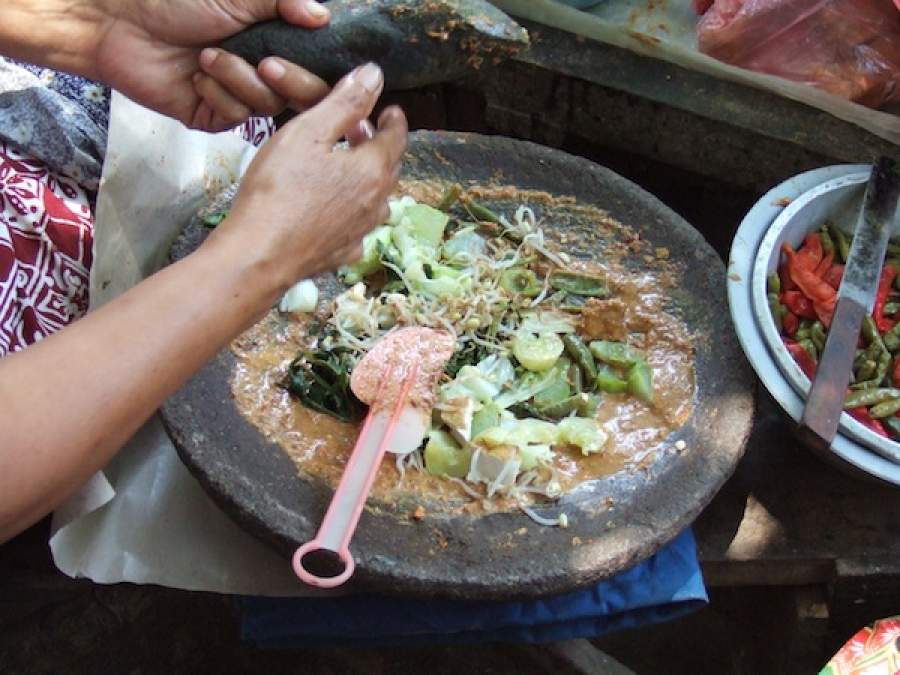I set out on this Habitat build worried that I wouldn’t have luck finding food to fit my picky vegetarian requirements. Knowing I would need all the nutrients I could get if I expected to help my team construct a home for a family in need (read: bend rebar and mix concrete), I packed enough energy bars to feed a small army.
Turns out, there are plenty of options when it comes to eating meat-free in Bali. Though many Indonesian dishes make use of pork, chicken and seafood, most restaurants (including the take-out place that delivers delicious boxed lunches to our worksite daily) offer a number of herbivore-friendly items on their menus.
Gado-gado, for one, has successfully dispelled my long-seeded belief that boiled vegetables taste bad. This Indonesian hot salad includes a combination of blanched cabbage, bean sprouts, string beans, jackfruit, bitter melon and corn, as well as fried tofu or tempeh, raw lettuce and sliced cucumbers (if you’re lucky, you’ll get a bit of boiled potato, too). All of this green goodness is coated in a peppery peanut sauce, the spiciness of which you can usually negotiate with the server or cook.
Another go-to is the vegetarian version of a dish called nasi campur: steamed rice surrounded by cooked greens, ginger, garlic and grilled tofu/tempeh. I say “surrounded” because, more often than not, the rice comes piled in the centre of the plate (usually in some geometric shape: a cone, a dome or a pyramid) with the other items placed neatly around it. It’s up to you to mix your own meal.
Finally, a word of warning to vegans: I’ve discovered that Balinese cuisine makes wide use of egg, so be sure to ask if there’s any in a dish before ordering it. As for those crispy crackers served as a side to so many meals here—they’re often made of shrimp. Unless you’re a pescetarian, you’ll want to skip them, too.
The moral of this story: if you’re a vegetarian (or have any other special dietary requirement), don’t let it stop you from volunteering overseas with Habitat for Humanity. Just be sure to mention your mealtime needs to your team leader before your departure. (For peace of mind, bringing a box of granola bars along won’t hurt, either.)
Add this article to your reading list




